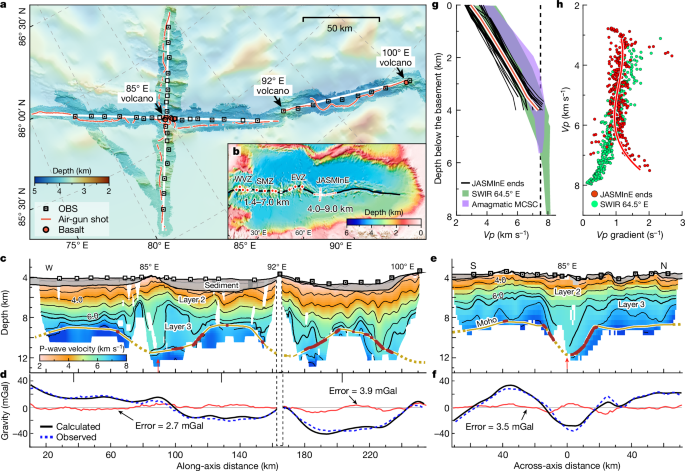Highly Variable Crustal Thickness Observed at the Ultraslow-Spreading Gakkel Ridge in the Arctic Ocean
The study presents the first high-resolution ocean-bottom seismometer (OBS) experiment conducted at the Gakkel Ridge, the slowest-spreading mid-ocean ridge on Earth. The results show that crustal thickness along the ridge axis is highly variable, ranging from 3.3 km to 8.9 km, and has increased from about 4.5 km to 7.5 km over the past 5 million years in an across-axis profile.
This observed variability in crustal thickness does not align with the predictions of passive mantle upwelling models, which suggest decreased crustal thickness at spreading rates less than 20 mm/year. Instead, the findings can be explained by a model of buoyant active mantle flow driven by thermal and compositional density changes due to melt extraction.
The influence of active versus passive upwelling is predicted to increase with decreasing spreading rate. The process of active mantle upwelling is primarily influenced by mantle temperature and composition. This implies that the observed variability in crustal accretion, including varied crustal thickness, is likely an inherent characteristic of ultraslow-spreading ridges.
Kustomisasi Ringkasan
Tulis Ulang dengan AI
Buat Sitasi
Terjemahkan Sumber
Ke Bahasa Lain
Buat Peta Pikiran
dari konten sumber
Kunjungi Sumber
www.nature.com
Highly variable magmatic accretion at the ultraslow-spreading Gakkel Ridge - Nature
Wawasan Utama Disaring Dari
by Tao Zhang,Ji... pada www.nature.com 08-21-2024
https://www.nature.com/articles/s41586-024-07831-0
Pertanyaan yang Lebih Dalam
